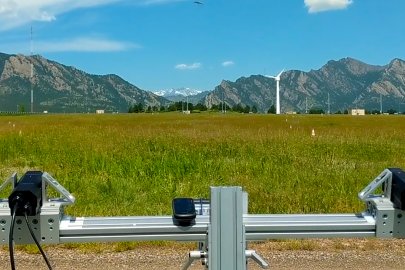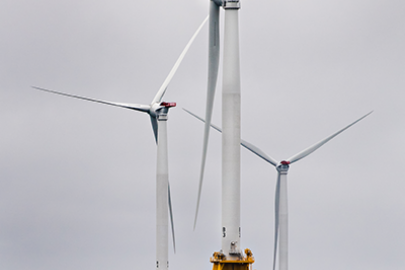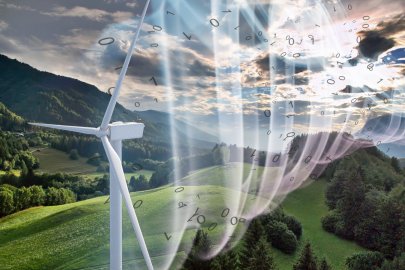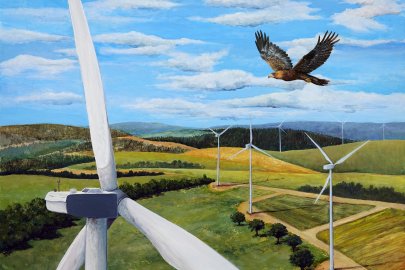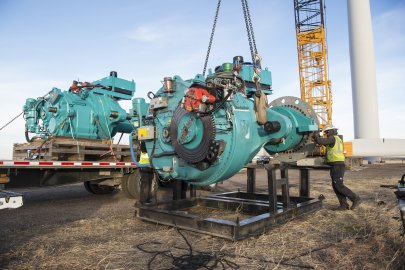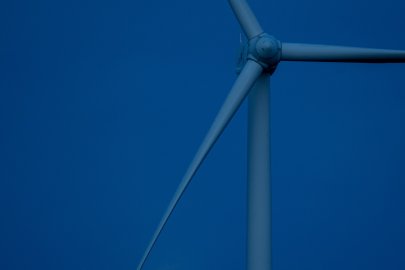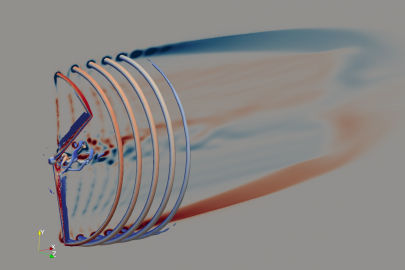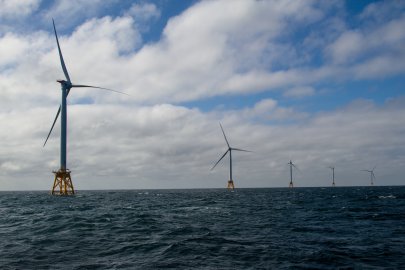First comprehensive study of the U.S. wind fleet shows that the performance of newer plants declines less with age than older plants.
Wind Energy Technologies Office
October 13, 2020First comprehensive study of the U.S. wind fleet shows that the performance of newer plants declines less with age than older plants
Ongoing technology changes within the U.S. wind industry are helping to slow the impacts of aging on wind power plants, according to a study by researchers at Lawrence Berkeley National Laboratory (Berkeley Lab) and published in the journal Joule. The study provides the first comprehensive evaluation of its kind for the United States. Results can be used by investors to help determine the financial viability of wind power plants and by energy system modelers to project the growth of wind power.
The study revealed that the oldest U.S. wind power plants maintained 87% of peak performance after 17 years, and newer plants showed almost no decline over the first 10 years (Figure 1). In addition, the U.S. wind fleet shows mild performance loss with age, and plants built after 2008 show the lowest levels of performance decline that have been found in a major fleet.
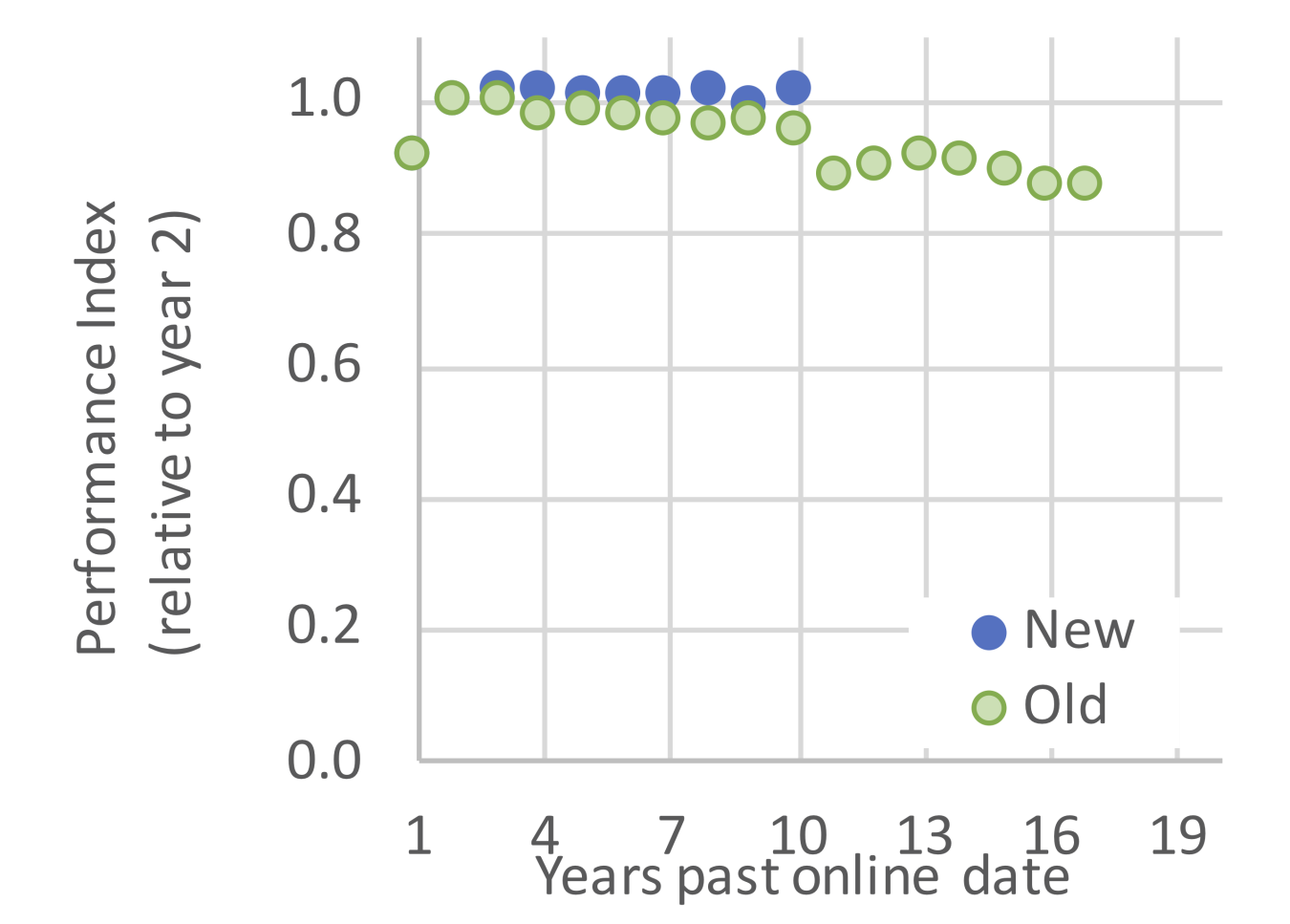
Figure 1. Average decline in performance with age for two cohorts of wind power plants. Figure courtesy of Berkeley Lab
Encompassing data from 917 wind power projects in the United States (Figure 2), the study also examined the correlation between certain characteristics of wind power plants (such as plant size, site terrain, turbine technology, and ownership type) and the rate of performance decline with age. One of the most interesting plant characteristics to be linked to age-related performance decline was specific power, which measures the ratio of generator size to rotor size. Researchers found that turbines with lower specific power—those with longer blades relative to their generator size—were associated with lower rates of performance decline. Over the last decade, project specifications have shifted toward lower and lower specific-power turbines, representing one of the major technology changes within the U.S. wind industry.
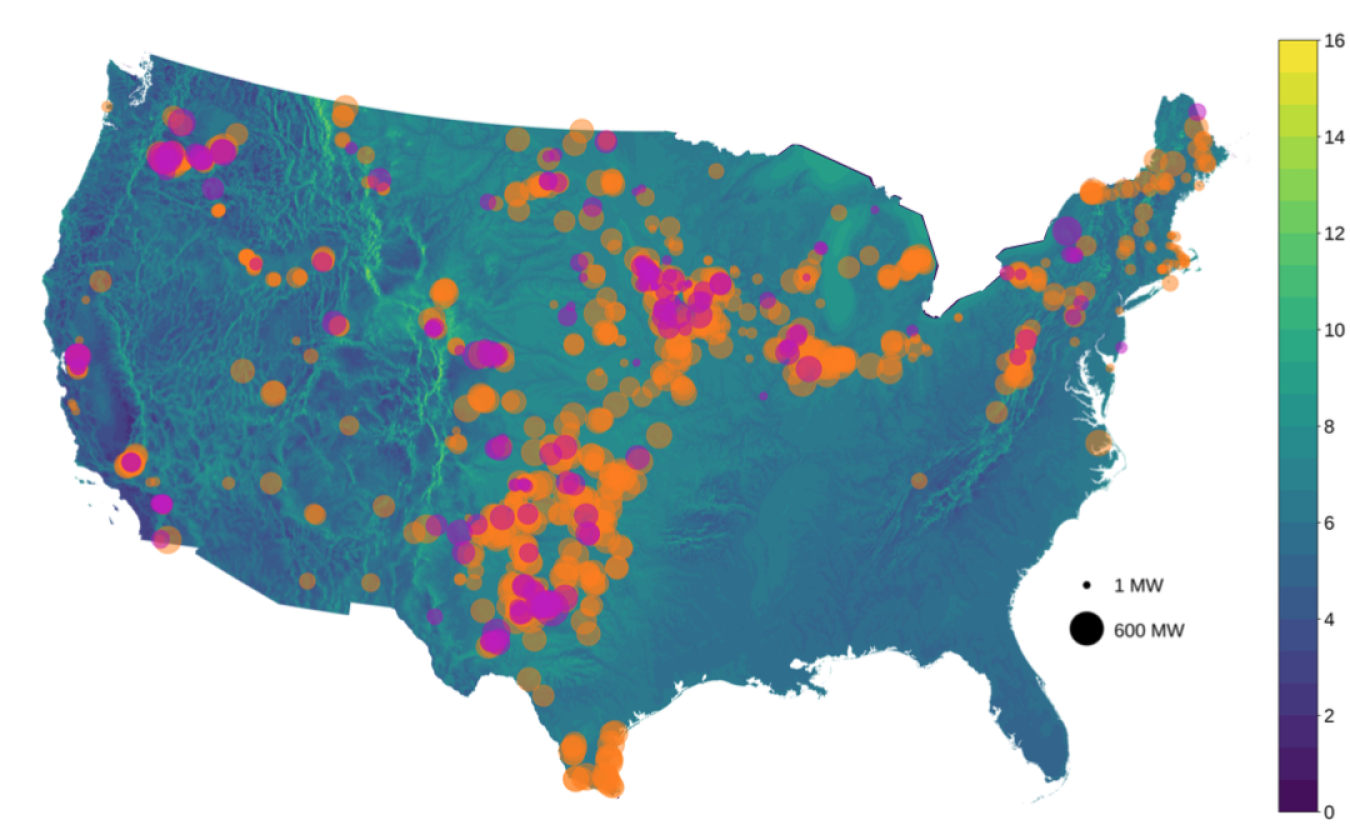
Figure 2. Map of wind projects included in the study. Pink projects were built prior to 2008, and orange projects were built in 2008 or later. Background color shows average wind speed in meters per second. Figure courtesy of Berkeley Lab
The two findings—that newer plants have less performance decline with age than older plants, and that low specific-power turbines are directly correlated with reduced performance loss—provide evidence that ongoing technology changes within the U.S. wind industry are helping to slow the impacts of aging on wind power plants. Additional hypotheses for the cause of improvements in newer plants relative to older plants include improved sensors and controls, reduced failure rates in certain components such as gearboxes, and general refinements to maintenance protocols.
“Despite the link between technology choices and aging, our research indicates that performance decline is more than a simple function of the underlying technology, but is also a managed process based on cost-benefit trade-offs that face plant operators,” said Dev Millstein, a co-author of the study and research scientist at Berkeley Lab. “The evidence for this is seen in the fact that aging doesn’t follow a linear process. Instead, it shows an acceleration in performance decline after 10 years of project life, coincident with the end of the production tax credit window.”
Millstein and his co-authors hypothesize that operators are responding to reduced generation-based revenue associated with the end of the production tax credit window by reducing maintenance rigor and costs, and thereby reducing the cost of energy generated.
While performance loss with age is not limited to wind turbines, it is an inevitability across all types of electricity generation technologies, all of which face some form of performance loss with time.
“This research shows that, at least for wind power, the loss in performance can be partially offset through technological adaptation and managed through cost-benefit trade-offs,” said Millstein.
Explore previous editions of the Wind R&D Newsletter or browse articles by topic:


